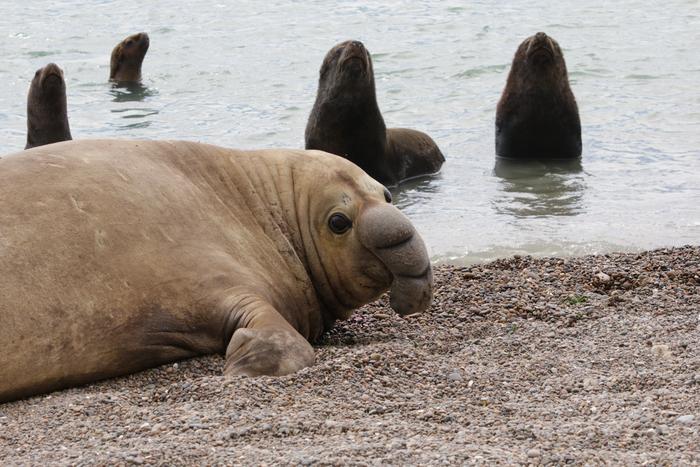Summary: A year after a catastrophic H5N1 avian influenza outbreak killed more than 17,000 elephant seals in Argentina, only about a third of the expected population has returned to their breeding grounds. New research reveals the first documented case of mammal-to-mammal transmission of this virus strain, raising concerns about its evolution and adaptation to new hosts.
Journal: Nature Communications, November 11, 2024, DOI: 10.1038/s41467-024-53766-5 | Reading time: 5 minutes
A Changed Landscape
The beaches of Península Valdés, Argentina, tell a haunting story of survival and loss. Where once thousands of elephant seals gathered to breed, now only a fraction remain, their calls echoing across beaches still littered with the remnants of last year’s devastating outbreak.
“It’s beautiful to walk the beaches now and hear elephant seals again,” said Marcela Uhart, director of the Latin America Program at the UC Davis Karen C. Drayer Wildlife Health Center. “At the same time, we’re walking among piles of carcasses and bones, and seeing very few elephant seal harems, so it’s still disturbing.”
An Unprecedented Outbreak
The research, published today in Nature Communications, documents how H5N1 avian influenza spread through the marine mammal population with devastating efficiency. The virus’s impact was severe: about 97% of seal pups perished in the outbreak, along with numerous adult seals.
“We were totally appalled by the dramatic impact of the epidemic of avian influenza on this population,” explains co-author Valeria Falabella, WCS Argentina director of coastal and marine conservation. “It is likely that more than half of the reproductive population died due to the virus. It will take decades before the numbers are back to the 2022 population size.”
A Virus Evolving
The study revealed something unprecedented: the virus evolved into separate avian and marine mammal variants after entering South America. “We’re showing the evolution of H5N1 viruses that belong to genotype B3.2 over time since their introduction in South America in late 2022,” said virologist Agustina Rimondi. “This virus is capable of adapting to marine mammal species, as we can see from the mutations that are consistently found in the viruses belonging to this clade.”
Looking Ahead
The impact extends beyond immediate losses. Most adult males and many experienced, fertile females haven’t returned to the breeding grounds. While no elephant seals have tested positive this breeding season, scientists continue monitoring the situation closely, seeking to understand how the virus spreads and whether surviving animals have developed resistance.
Glossary
- H5N1: A highly pathogenic strain of avian influenza virus
- Clade: A group of organisms believed to have evolved from a common ancestor
- Harem: A group of female seals and their pups, typically associated with a dominant male
- Genotype: The genetic makeup of an organism
Quiz
- What percentage of elephant seal pups died in the outbreak?
Answer: 97% - How long might it take for the population to recover to 2022 levels?
Answer: Decades - What unprecedented change occurred in the virus after entering South America?
Answer: It evolved into separate avian and marine mammal variants - Have any elephant seals tested positive this breeding season?
Answer: No
Enjoy this story? Get our newsletter! https://scienceblog.substack.com/


